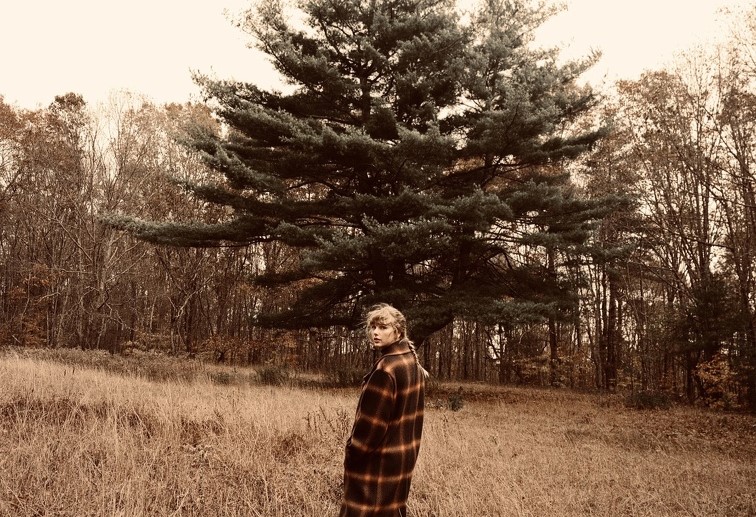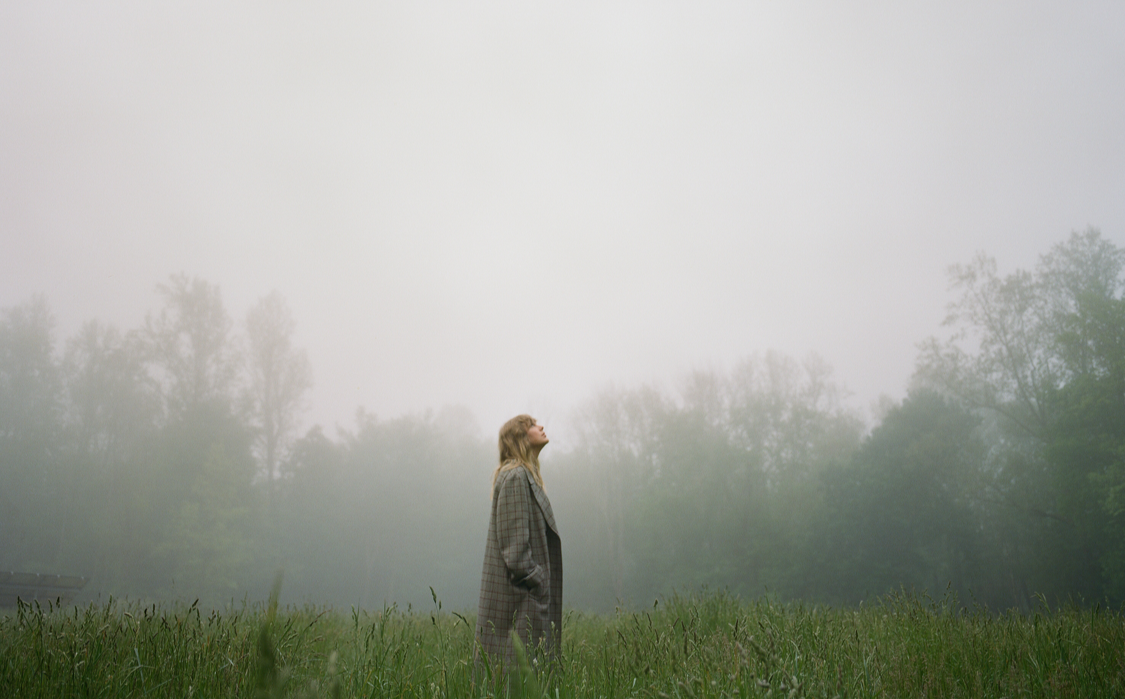By Katerina Taxiaropoulou,
Close your eyes and go back to the spring of 2020. You are alone in your room. You sit on your bed, burying your face in your hands. In the next room, your mother is watching TV: Breaking news! The number of reported deaths has increased; Medical professionals appear at a loss; Small businesses are shutting down; More and more people experience depression. A world health, financial, and emotional crisis. Unable to go out and meet people, you are stuck with yourself. You think about your life, your childhood, your lovers, your dreams, your failures. Time passes and there are so many things you wish to say but cannot. Like a thread, words gather around your tongue and tie it so hard you feel sick. Do not worry though, Taylor Swift has got you.
During the first round of COVID-19 quarantine, American singer-songwriter Taylor Swift created her eighth studio album Folklore. After her Lover Fest tour was canceled, she stayed in her remote Los Angeles residence, where she conceived the new album as “a collection of songs and stories that flowed like a stream of consciousness” (Taylor Swift). A rather experimental work, Folklore presents the inner thoughts and struggles of different fictional characters, composing a multi-layered story arc that sails away from Swift’s previous autobiographical projects.
Produced with the virtual help of Aaron Dessner and Jack Antonoff, the end product is an assemblage of minimalist tunes where, according to reviewer Laura Snapes, “bombastic pop makes way for more muted songwriting” (The Guardian). Freed from the need to make a chart hit, Swift has the space to become more contemplative, and, refocusing on her true identity as a writer, she produces lyrics that read like poetry. The central theme she explores is the journey of growing up, the loss of innocence, the heartbreak, and the fall.
- Loss of Innocence
“’Cause I knew you
Stepping on the last train
Marked me like a bloodstain,
I knew you
Tried to change the ending
Peter losing Wendy,
I knew you
Leaving like a father
Running like water,
And when you are young, they assume you know nothing”
(Taylor Swift, quote from Cardigan)
One of Folklore’s central plot lines is the love triangle between three teenagers, Betty, James, and ‘the August girl’. The single Cardigan tells the story through the perspective of Betty, the girl that was cheated upon. Looking back at the incidents as a grown woman, Betty sees in her relationship with James a rite of passage where she moves away from girlhood innocence towards the maturity issued from heartbreak.
In the music video, young Betty appears in her white nightgown, playing the piano with her hair up in little buns. Suddenly, a golden dust comes out of the piano’s roof and once she opens it, Betty jumps right in, thus embarking on a long journey to adulthood. She falls into a vast sea where she almost loses her life fighting with wind-battered waves. Thankfully, she finds a floating piano to hold on to and, through it, she returns home. There where it all started, she sings the song’s final lines, her voice sounding “weather-worn yet at peace” (The Guardian).

A few tracks later, August tells the story from the perspective of the ‘boyfriend-stealer’. Having slept with the boy she adores but who does not wish any further relationship with her, she feels blue. At the same time, however, she realizes he never belonged to her and rejoices over her phantasy being realized, at least once. As reviewer Jon Caramanica notes, Swift often demonstrates that “contempt action and exuberance aren’t mutually exclusive, nor is brightness and reflection” (New York Times). Thus, despite the sad story it narrates, August is delivered through an upbeat melody and light, joyful vocals.
- The Heartbreak and the Fall
They told me all of my cages were mental
So, I got wasted like all my potential
And my words shoot to kill when I’m mad
I have a lot of regrets about that
I was so ahead of the curve, that curve became a sphere
Fell behind all my classmates and I ended up here
Pouring out my heart to a stranger
But I didn’t pour the whiskey
(Taylor Swift, quote from This Is Me Trying)
Once innocence is lost, what follows is pain and self-destruction. Moving beyond the teenagers’ love triangle towards a darker place of love-melancholy, My Tears Ricochet relates the aftereffects of betrayed love through the metaphor of committed murder. The story is narrated by the ghost of a dead woman who finds her murderer, somebody she once loved dearly, at her funeral. Infusing different styles of music such as gothic rock and gospel, My Tears Ricochet turns into a soundscape that is both haunting and sorrowful. Slowly, the beats of the strings become sharper and the voice builds up to a “climatic cri de coeur” (The Guardian).
By listening to the singer’s broken voice at the song’s climax, one feels that the pain she describes is true to her. My Tears Ricochet is the only song on the album that was written solely by Taylor Swift and it was inspired by her dispute with Big Machine Records which sold all of her master recordings without her permission. In an interview with Alex Suskind, she said that she wrote the song following her parting from the company, “comparing a relationship ending to when people end an actual marriage. All of a sudden, this person that you trusted more than anyone in the world is the person that can hurt you the worst.” (Entertainment Weekly). Yet, although the song comes from an event very specific to the singer’s life, it hits the listener deeply. As Lucy Harbron remarks, this happens because Swift opens it up to “something universal”, that is “a sense of betrayal and loss of self-ownership” (Clash).

In the same vein, This is Me Trying is an orchestral pop tune that relates a feeling of disappointment, failure, and regret. This time however it does not stem from another person, but the speaker’s self. Writing the song from multiple perspectives, Swift constructs a character who has found himself or herself in a mud swamp and struggles with motivation to get out. As Suskind notes, the subject experiences “an existential crisis” (Entertainment Weekly). Unable to face failure, she or he resorts to alcohol and becomes addicted. This Is Me Trying is a great example of how Swift considers “the murky line between…being a victim and a catalyst” (The Guardian). Despite recognizing personal responsibility for his or her downfall, at this point, the subject cannot move forward and is only making loops.
Much like the year 2020, Folklore showcases an open ending. Betty, James, and the other characters by the album’s end have grown mature, yet still, their feet do not touch the ground. Like a pendulum, they swing back and forth, unable to come to terms with their situation and find peace. Thus Taylor Swift decided to go deeper into the folklorian woods and create a sequel album, Evermore.
References
- Taylor Swift: Folklore review – bombastic pop makes way for emotional acuity. theguardian.com. Available here
- Taylor Swift, a Pop Star Done with Pop. nytimes.com. Available here
- Taylor Swift broke all her rules with Folklore—and gave herself a much-needed escape. Entertainment Weekly. Available here




